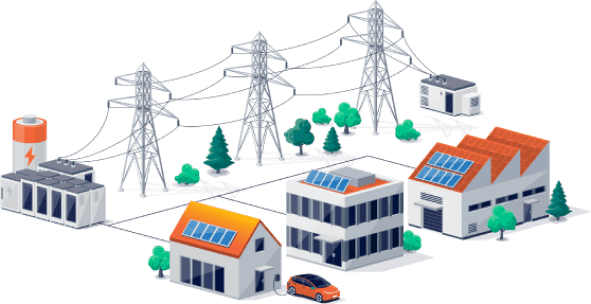

Envision a cluster of thunderstorms over warm, tropical oceans that begin rotating hundreds of miles offshore. The intensity builds as the tropical depression becomes a tropical storm, winds twisting and turning as it charges West. The spiral storm is expected to make landfall in 36 hours.
You watch the news, but with less anxiety, knowing that if the grid goes down, your home can maintain power ― thanks to your solar panels with battery backup.
Natural Disaster FAQs
During a natural disaster, your safety is of upmost importance to us. We’ve provided a list of frequently asked questions during hurricanes or other natural disasters.
Storm Prep Made Easier
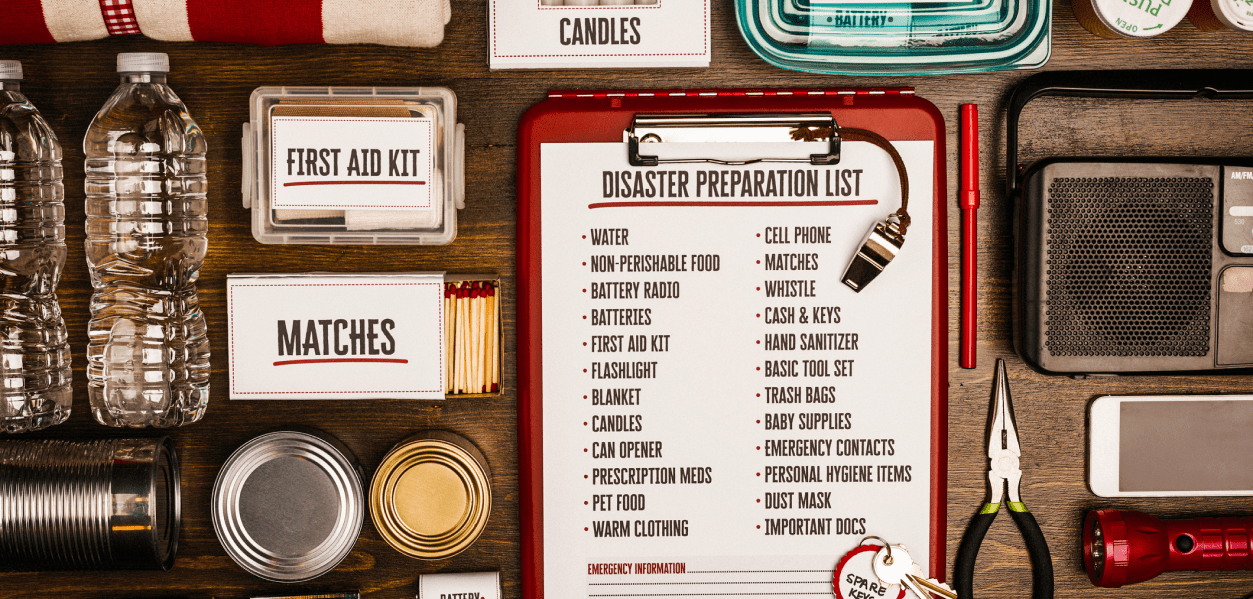
A battery with a system controller enables you to consume the clean energy you produce on-site at strategic times ― during peak electricity prices and during a grid failure.
Different battery manufacturers offer slightly different configurations. But generally speaking, there are settings that control how much energy to set aside in case of a grid outage and settings for what to do with the rest.
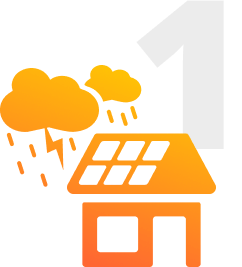
Before a Storm: Make Sure You’ve Opted Into Storm Mode
Each solar battery manufacturer has a slightly different setting for storm preparation. Weather Guard, Storm Watch, Emergency Backup, etc. are the names of various storm mode settings that you might see. Some manufacturers automatically enroll customers into their particular storm mode, and others require you to activate this setting, preferably during the installation process so you’re prepared right away. Be sure to look through your respective app to make sure you’re opted-in to the program.
When the National Weather Service (NWS) issues severe weather alerts for your area, the manufacturer signals to your battery to temporarily switch to storm mode, which takes precedence over the other settings. When the severe weather warning is triggered, your battery will set the backup reserve at or near 100%, and begin charging from any source available (your solar panels first, then the grid). This action enables your battery to fully charge and prepare your system in case the power goes out. Once the event has passed, your backup reserve will be reset to its original setting before the storm.
It's also wise to reduce your household energy consumption or shed unnecessary loads as severe weather approaches. Doing this makes more power available to charge your battery.
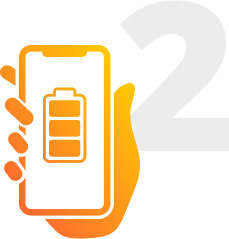
During a Storm: Monitor Your State of Charge
If the grid goes down, your solar plus battery backup system will automatically begin sending power to your home. You could see the lights flicker a few times (depending on the obstruction) as the circuit attempts to reclose, but that may be the only indicator your home begins drawing from your reserve.
Maintaining power during an outage depends on three factors: the amount of solar energy your home is able to generate, the power usage in your home, and your battery’s state of charge.
During an outage, you can ensure an uninterrupted experience by monitoring this state of charge. Keep an eye on the percentage of power in your battery and gauge the speed at which it’s dropping. If you feel that your battery is draining too quickly for comfort, scale back on your consumption by turning off your most energy-intensive loads such as your A/C, washer/dryer, dishwasher, desktop computers, and EV charging. This will decrease the amount of energy you pull from your battery, which helps increase the duration your solar plus storage system can “island” from the grid.
Refrain from Restarting
Keep in mind that if your battery drains to around 10% or lower, even if the sun is out, it won’t have enough charge to power your home and the power will turn off again. Here’s why: when the grid is down and your remaining stored energy is low, your solar battery is doing its best to make sure your system will turn back on once it has sufficient power supplied from your solar panels. Sometimes this won’t happen until morning when the sun reappears (manufacturers have different protocols).

Therefore, while it may be tempting to restart your battery after it has turned off when it’s nearly empty, doing this only forces out what little energy reserve is left in the device. Restarting a battery tells it to create a grid and power your home load, which takes electrons. But the sun is rarely shining in the middle of a storm, so a restart will do nothing beneficial ― it may even require a service call if your battery gets so low that it can’t restart on its own once the grid is back up. The smart move is to continually monitor the battery state of charge during an outage and calibrate your home’s energy usage to a level you are comfortable with long before you get to extremely low states of charge.
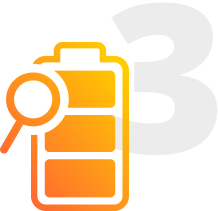
After a Storm: Inspect Your Solar Battery
Solar batteries are often installed in utility closets, storage spaces, and garages on exterior walls away from doors and windows. If your battery is installed outside your home, it’s a good idea to visually inspect it for any damage after a storm. These devices are highly resilient and designed to withstand harsh conditions, but gale-force winds could cause damage from airborne debris.
While uncommon, a lightning strike nearby could trigger an electrical surge that damages a solar plus battery storage system. If you suspect your solar battery isn’t functioning in the aftermath of a storm, reach out to Sunnova’s Customer Care team.
Once the storm has passed and the grid comes back online, your battery settings will automatically return to their prior settings if you’ve opted-in to storm mode. And voilà ― everything is back to normal.
Reduce Weather-Related Stress
Severe weather, especially torrential rains and gale-force winds, can trigger feelings of being out of control. Solar with battery backup puts some of the control back in your hands, with one less worry during storm-induced distress.
Grid Services
Did you know, depending on where you live, you could be compensated for using your battery when the grid is stressed? Learn more about Sunnova’s Grid Services.
